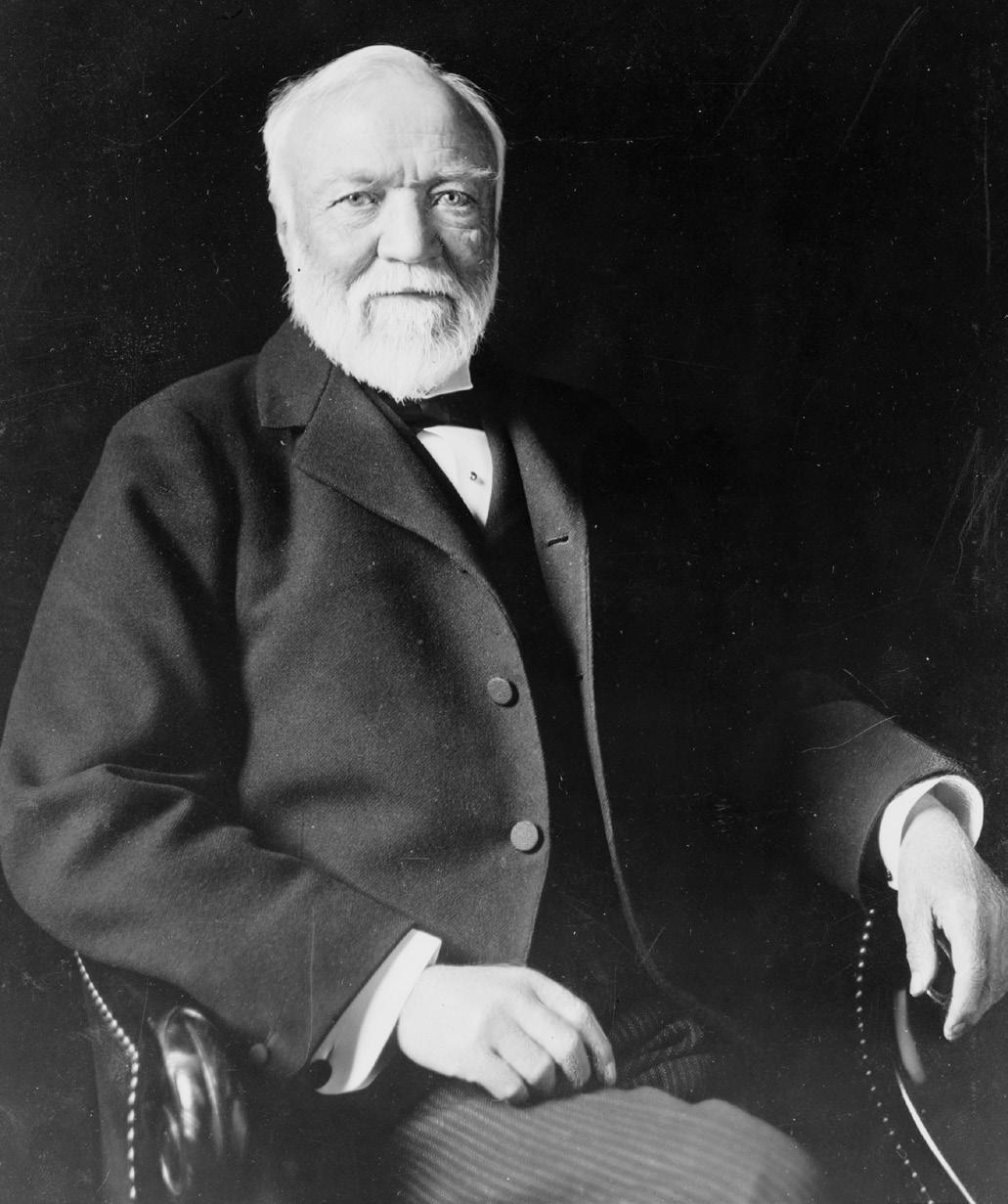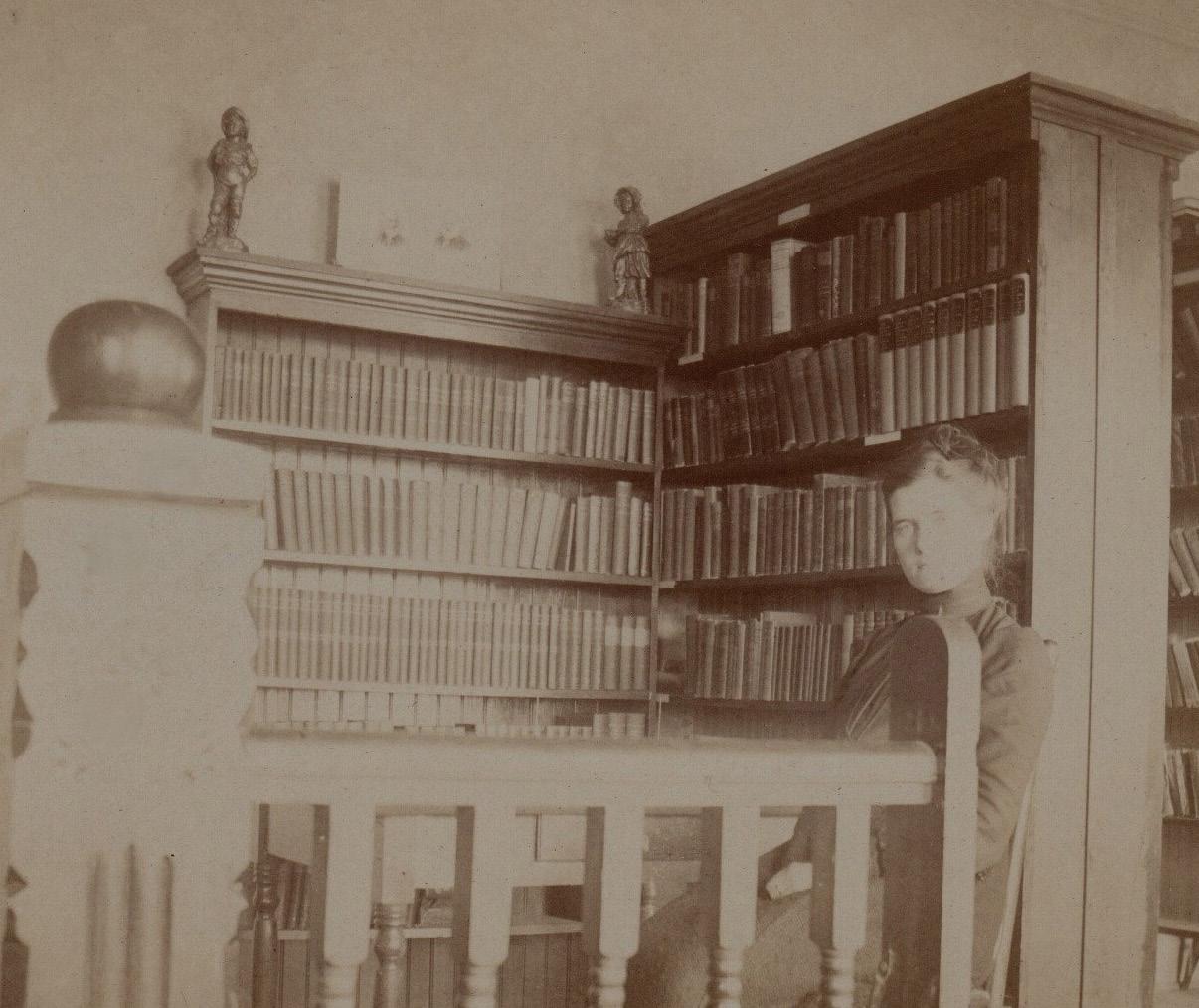
5 minute read
History: Carnegie's Gift to Visalia
How Visalia Opened its First Library's Doors
Carnegie’s Gift to Visalia
Words by Terry Ommen
Since the beginning of the town, Visalians have had an appreciation for books. As early as 1861, there was talk of creating a library, but for whatever reason it didn’t happen. For the next four decades the town got by with what were called “reading rooms.” They were not the same as libraries, but they gave those who didn’t have literature at home access to educational and recreational reading material. Many times these rooms were poorly funded and housed in temporary quarters, often sharing space with businesses or fraternal groups. They were operated by volunteers using donated books and hand-medown furnishings. Although reading rooms served a purpose, there was plenty of room for improvement and thanks to a benevolent Scottish man, help was on its way.
Andrew Carnegie was born in 1835 in Dunfermline, Scotland. In 1848, his family immigrated to America, settling in Allegheny, Pennsylvania, a suburb of Pittsburgh. As a young boy, he was given the opportunity to borrow books from an influential citizen. Colonel James Anderson graciously opened up his personal library to local children, expanding their access to reading material. Andrew remembered the experience to be quite influential in his life, expanding horizons and what he called “the light of knowledge.” He vowed that should he ever become wealthy, he would make similar opportunities available to other children.
By age 40, Andrew had amassed a fortune in the steel business, and he never forgot his commitment. Over his lifetime, the wealthy man gave away millions of dollars, financially supporting many philanthropic causes. One cause that he potentially benefited most was his push to build libraries in the United States and throughout the world. Between 1883 and 1929, his organization was credited with providing millions of dollars to construct over 2,500 library buildings.
The city council agreed to the conditions and passed an ordinance establishing a free library. They created a five-member Board of Library Trustees with former Mayor Harry Levinson as president and George W. Stewart, secretary. A short time later, Stewart became board president.
As the town did not have suitable land on which to build the library, property was needed. In May 1903, a lot on the northeast corner of Main and Cottonwood (now Encina) owned by Anna Mills Johnston was selected. The price was $1,500 and the funds were provided by prominent Visalians and local companies.
Plans for the building were drawn by Benjamin McDougall, a Fresno architect, and in October 1903 the plans went out for bid. Shortly after that construction began.
The library trustees then began their search for a librarian. Grace Hurlbut from York, Nebraska, came to them highly recommended with extensive library experience. She accepted the position and became Visalia’s first librarian.

In May 1904, the building was complete with a basement in the Spanish Colonial Revival style. The Delta described it as “one of the most handsome structures in the city.” Incorporated into its construction was granite from the Rocky Point Granite Works near Exeter, and a slate roof with materials quarried from Amador County. The newspaper claimed it was the only building with a slate roof in Visalia. The interior had “cork carpet” and new bookcases, tables, and bentwood chairs. Several unique features within the new building included an efficient heating unit installed in the basement. The paper reported, “Within twelve minutes the temperature of the room changed. Either hot air or cold air can be turned on and the temperature desired can be had.” An elevator was installed in the basement, allowing heavy cartons of books that were stored there to be easily moved up to the main floor.
On June 1, 1904, the library opened its doors to the public. Upon entering, visitors saw 1,064 books, many of which had been part of earlier reading room collections. Each had been assigned a Dewey Decimal System number. Library cards were available and books were ready to be checked out. Upon return, each of the borrowed books had to go through an overnight fumigation process before they were returned to the bookshelf.
For over 30 years Visalia’s Carnegie Library served the town. However, by the 1930s, Visalia had outgrown the popular facility, and the city council decided that a larger building was needed. With city funds and money from the federal government’s Public
Works Administration, construction began. The library was dedicated on August 28, 1936. It is now the home of the children’s wing of the current library on Oak Avenue. The vacated Carnegie Library property was sold and the library building was demolished the same year.
Andrew Carnegie died in 1919, but his organization continued. A total of six Carnegie Libraries were built in Tulare County—Visalia, Dinuba, Exeter, Orosi, Porterville and Tulare.












